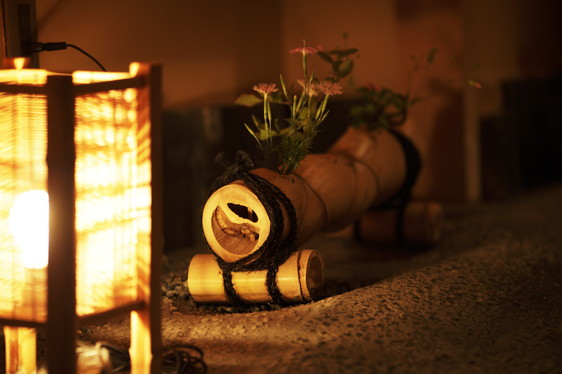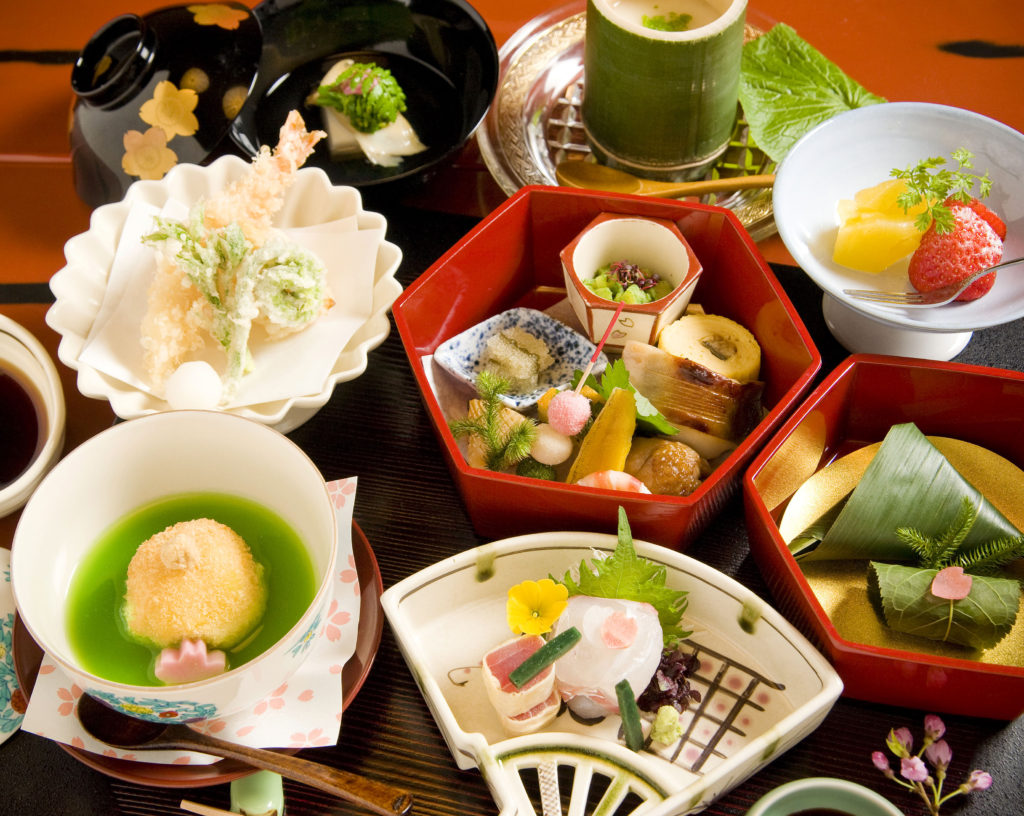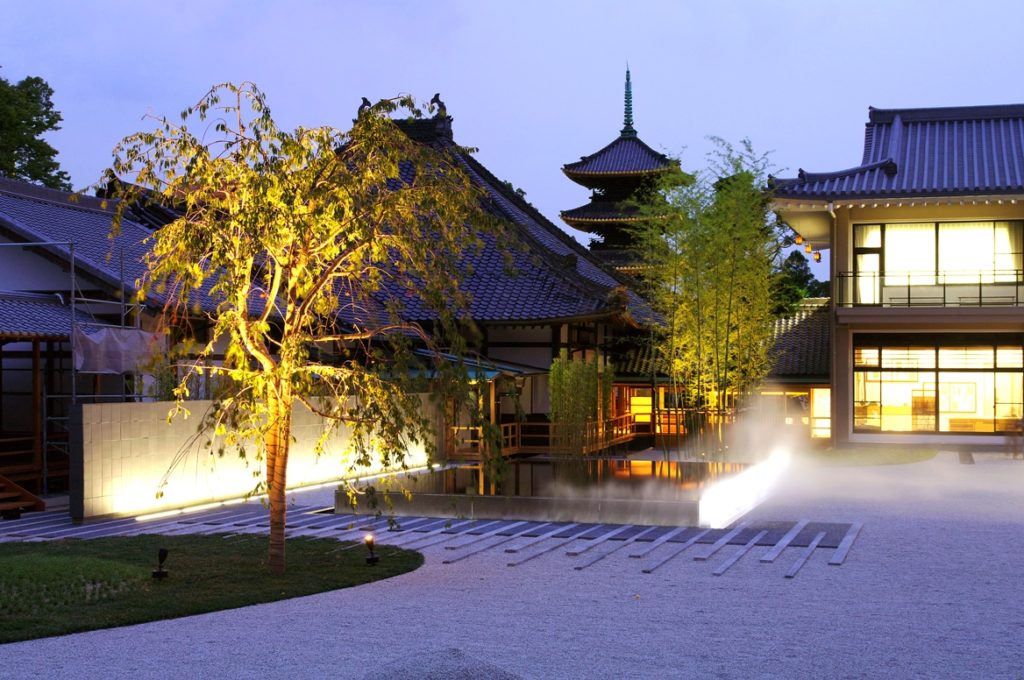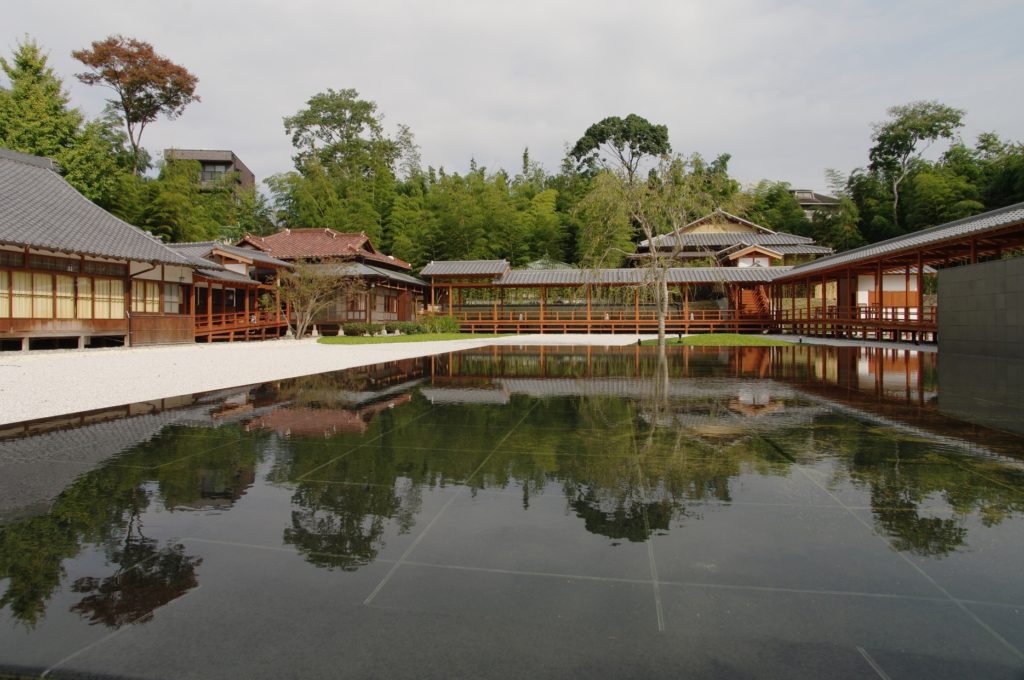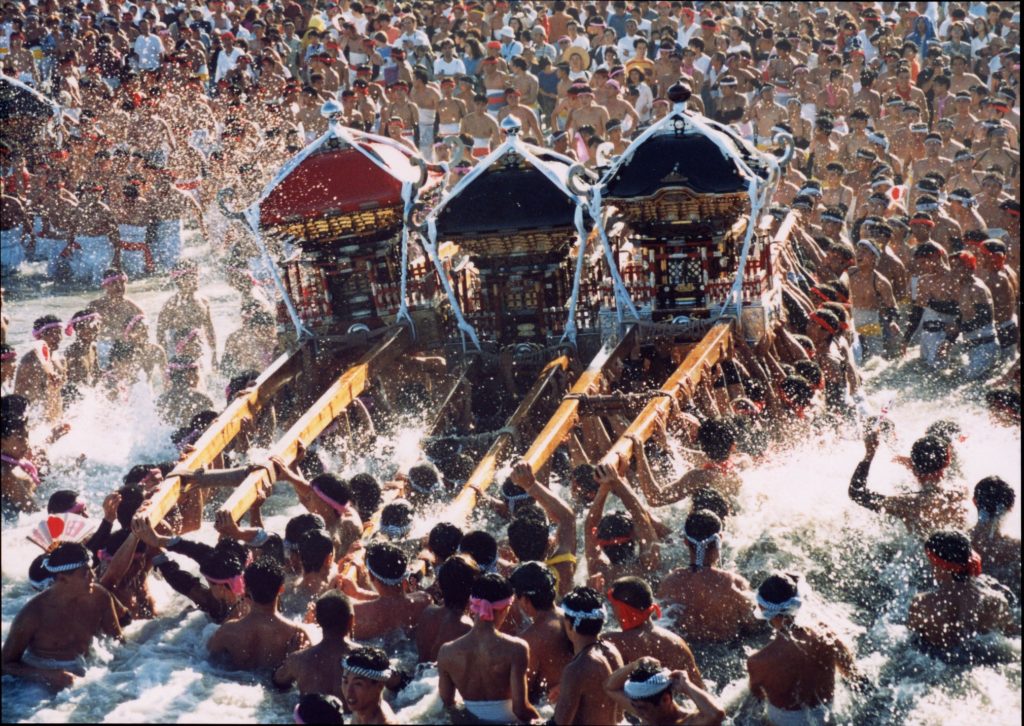Japan Michelin Tires has announced a selection of “Michelin Guide Tokyo 2020” to showcase selected restaurants and accommodations in Tokyo.
“Michelin Guide Tokyo” which was published in 2007 as the first Michelin Guide in Asia, has been renewed every year, and “2020” lists 464 restaurants and 34 accommodation facilities. 11 restaurants received three-star ratings, including three for 13 consecutive years. A total of 57 new restaurants, and accommodations were also listed. With 226 starred restaurants listed, Tokyo will again be the world’s most starred city this year.
But why is that? Why has the Michelin Guide given Tokyo the highest number of stars in the world?
It is not easy to explain the reasons why Tokyo is the world’s number one gourmet city. Japanese people’s skillfulness and sensitivity to food are indeed possible factors. At the root, however, I believe there is the spiritual culture of Japanese cuisine.
Since ancient times, Japanese people have recognized taking a meal and even cooking food as Shinto rituals. At each meal, they have joined their hands and given thanks to the blessings of nature. I think the Japanese people’s pursuit of gastronomy has been backed up by the power of Japanese civilization.
The Michelin Guide offers much praise to Japanese cuisine. On the other hand, the spiritual culture of Japanese cuisine is following a course of decline. When the Japanese people can restore the once-flourishing spiritual culture of Japanese cuisine, Japan will surely become a real rich gastronomic country.
Tokyo Is the World’s No. 1 Gourmet City
When the 2008 edition of the Michelin Guide to Tokyo (2007) was released, it became a big topic. At the same time, there was also some cool air in Japan. The New York Times reported this as “Michelin Gives Stars, but Tokyo Turns Up Nose.”
However, this Michelin Guide to Tokyo sold well. It sold 90,000 copies on the first day, which was the first in the history of the Michelin Guide series. However, it was Europe that was hit the hardest by the release. It was because 150 restaurants in Tokyo were awarded stars by the Guide. This number was more than double the number of restaurants (64) that were awarded stars by the 2008 Michelin Guide to Paris. In addition, Tokyo overwhelmed other cities in terms of the total number of stars.
The Michelin Guide’s principle is to use the same rating standards at every location. This means that, in the Michelin’s concept of values, Tokyo has established itself as the world’s number one gourmet city by leaving second-placed Paris far behind. It appears Tokyo will not yield its position to any other city for quite a while.
In the 2010 edition of the Michelin Guide to Tokyo (2009), 11 restaurants have been awarded the highest rating of three stars. Meanwhile, the 2010 Michelin Guide to Paris has given three stars to 10 restaurants in Paris. Tokyo has thus surpassed Paris for the number of restaurants with three stars for the first time. As a result, Tokyo now has the most restaurants with three stars in the world in addition to the most Michelin stars in total.
When Jean-Luc Naret, the 6th director general of the Michelin Guide, was interviewed by Korean newspaper JoongAng Ilbo, he talked about why Tokyo has been evaluated highly as described below. His accurate consideration on Japanese restaurants is worthy of attention. In addition, it appears that he had no intention to gain Japanese people’s favor because he said this in an interview conducted by a Korean media.
“Japanese cuisine is excellent in quality. Also, the quality of the chefs in Tokyo is higher than that in any other city. In particular, the chefs’ specific techniques have been passed down well from generation to generation. It is difficult to track the techniques and traditions that have come down through several generations or several hundred years. What I’ve valued especially highly is their expertise. (snip) Most of the restaurants I visited were those that have become specialized in a specific cuisine, such as sushi bars, sashimi restaurants, yakitori shops and udon restaurants. I was very impressed. Based on this special characteristic, quite a few restaurants in Japan have acquired unrivaled expertise.”
The Michelin Guide started as a guidebook for drivers, which was published by the tire maker Michelin & Cie in 1900. The star system was then introduced to award stars to restaurants of high quality. With the anonymity of its inspection and the fairness and appropriateness of its evaluation, Michelin’s ratings have become the most reliable index for French gourmets.
Deeply Shocked Gourmets in Paris
It might have been those gourmets in Paris that suffered the greatest shock by the release of the Michelin Guide to Tokyo. For the Parisians referred to as one of the best gourmets in the world, it must have been unforgivable news that Tokyo had ousted Paris from its position as a gourmet heaven. There was more to it. Tokyo was not only given the most stars but “turned up its nose.” It would be no surprise if Parisians fainted when hearing this.
To understand the feelings of the Parisians, we’ll have to know the status of the Michelin Guide first. The status of the Michelin Guide in France is nearly absolute. It’s hard to find a French person who turns up his or her nose to the Michelin Guide.
The Michelin’s ratings are the standards in which the French people trust. It is even said that every time a restaurant gains a star, its sales increase by 30%. For restaurant managers, therefore, whether their restaurants can get a star and how many stars they can get are important management factors. If a restaurant is demoted, it can subsequently receive harsh criticism like one misfortune follows another. It is also said that the number of Michelin stars can affect the credit line set by a bank for the relevant restaurant. It is difficult for Japanese people to imagine that the rating by a restaurant guide directly affects the credit line. In addition, it is said that there was even a French chef who killed himself when he heard a rumor that his restaurant would lose a star. For chefs in France, receiving three Michelin stars is the highest honor.
Speaking from personal experience, I think the Michelin Guide’s ratings are convincing enough and worthwhile to be the standards for the Parisians. When I went to France this year, I visited well-established restaurants Le Cinq (two stars) and L’Espadon (two stars) and newly risen L’Agape (awarded one star for the first time in 2009) in Paris. I also visited La Ciboulette (one star) in a local city Annecy. It is not an exaggeration to say that you will never be disappointed in visiting a restaurant having at least one star. There appears to be clear reasons why a restaurant has been awarded a star or more stars and why another restaurant has not received a star. Well established restaurants have a steady atmosphere and restaurants recently awarded stars have an uplifting feeling.
Tokyo Has 12 Times More Restaurants More Than Paris.
So, it is indeed significant that Tokyo has been awarded the greatest number of stars in the world by the Michelin Guide. To me, however, it seems to be natural that Tokyo tops the list of the world’s gourmet cities over Paris. I think it is wrong to say that Tokyo has become the world’s number one gourmet city. The truth is Tokyo has always been the number one gourmet city and the Europeans have finally recognized this fact.
The fact that Tokyo is a great gourmet city is evident not only from the number of Michelin stars but also from the number of restaurants itself. In terms of the number of restaurants in the city, Paris has 13,000 and New York has 25,000 while Tokyo has as many as 160,000 restaurants.
In the 2010 Michelin Guide to Tokyo, 132 of the total 197 restaurants that have received a star or more stars were Japanese restaurants. From this fact, it can be said that Michelin’s recognition of Tokyo as the world’s number one gourmet city is a result of its high rating of Japanese cuisine.
As indicated in Mr. Naret’s words introduced above, this Japanese cuisine is supported by the many restaurants that have become specialized in their pursuit of expertise. It is true that French, Italian, and Chinese cuisines consist of various food and cooking cultures respectively. However, French cuisine is always French cuisine and has never been broken down into specialized restaurants even though each restaurant may have its own specialty or a signature dish. Speaking of specialized restaurants, La Tour D’argent (one star) in Paris is known for their canard dishes, but there are no such specialized restaurants in France as Japanese ones. This is the same in other countries. In the world, no other county than Japan has such a highly specialized cooking culture.
I think this is related to the abundance of foodstuff, especially seafood, in Japan. If there are limited kinds of foodstuff, cooking repertories will also be limited. English, German, Dutch and Swiss cuisines do not have much variety. Japanese people may therefore get bored within several days. Also, it can safely be said that there is no cooking culture in America.
That said, they are better than Arab cuisine. Even American people will be surprised at the extremely limited variety of Arab cuisine. In most areas in the Arab world, you can only eat local food although there are few exceptions such as Dubai. Their poor cooking repertories are caused by high priced vegetables due to the harsh climatic conditions. During my stay in Iraq, I was invited by local dignitaries for dinner every day. At every dinner, however, I found almost the same dishes with limited ingredients. Yemen was even worse. I was not given any choice other than eating stewed beans.
Wide-ranging, Sophisticated Japanese Cuisine
In contrast, Japanese cuisine offers a huge variety. First of all, Kyoto, which used to be the capital of Japan for more than 1,200 years, has an accumulated and polished culture of Japanese cooking. It is specifically called Kyo-ryori (Kyoto cuisine). In addition, there are many unique regional cuisines in Japan. Depending on the style of serving meals, Japanese cuisine is classified into kaiseki (会席)-ryori, kaiseki (懐石)-ryori, kappo- ryori, shidashi-ryori, and shippoku-ryori.
Furthermore, there are a countless number of specialized restaurants for almost all types of dishes. Even for sushi alone, there are sushi restaurants specializing in Kyo-zushi, Kansai-zushi or Edomae-zushi. Some restaurants specialize in cooking a specific type of food. There are also restaurants for special cuisines such as organic food restaurants and shojin ryori restaurants.
It appears that Japanese people have a predisposition to become particular about everything. They often try to pursue one particular thing thoroughly to master the secrets or reach perfection. They have done the same thing in the world of cuisine. As Japanese chefs have pursued their paths in cooking, their restaurants have become more and more specialized. Thus Japanese cuisine has become specialized in each type of food or dish. It is natural that foreigners are stunned by the sight of Tokyo where 160,000 specialized restaurants stand side by side.
Mr. Naret’s words that quite a few Japanese restaurants have acquired unrivaled expertise are meaningful. The “unrivaled expertise” is not a thing that can be acquired in a day. Japanese chefs’ techniques include the ones that have been passed down from generation to generation and accumulated for several hundred years.
For example, Daiichi, a suppon (soft shelled turtle) restaurant in Kyoto, has continued to serve only suppon-nabe (turtle stew) for over 300 years beginning from the Genroku period. After serving the sakizuke (appetizer) also containing suppon, Daiichi serves nothing but suppon nabe. Daiichi has also continued to use the same pots for several hundred years. It is said that the pots have been used so well for so long that you can make suppon soup simply by boiling water in the pots. How can a restaurant with a 20- or 30-year career make a suppon nabe better than the one made by such a long-established restaurant as Daiichi? Perhaps, Daiichi serves the best suppon nabe in the world. I would say this deserves to be called “unrivaled expertise.” In Japan, especially in Kyoto, there are a lot of such long-established restaurants like Daiichi that have been in business for several hundred years.
Ramen Is Now One of Japanese Cuisine
In the meantime, it is not easy to clearly answer the question what is Japanese cuisine. The term Japanese cuisine originally referred to traditional Japanese dishes. However, tempura, for example, was derived from a dish introduced by the Portuguese during the 17th century. Also, tonkatsu was initially made in imitation of Austrian dishes such as Schnitzel. Thus, both tempura and tonkatsu were Western dishes when they appeared. But now, there would be no harm to call them Japanese dishes. Even if you visit Lisbon or Vienna, you can no longer find a dish that can beat tempura or tonkatsu. The original dishes were merely used as models. In the hands of Japanese people, they were transformed into new dishes of a higher level.
This applies also to curry rice and ramen. They should now be called perfect Japanese dishes. In the first place, Chinese people do not have a habit of eating only a bowl of ramen as a meal. They sometimes eat a small bowl of noodles at the end of a meal, but these noodles are not even close to Japanese ramen. In Japan, there are unique ramen cultures in various regions. They say the Chinese people that have learned this are very surprised.
Perhaps, Korean barbeque eaten in Japan can also be called a Japanese dish. Korean barbeque eaten in Korea is totally different from that in Japan both in form and quality. In Korea, there is no such menu as the Japanese one where you can choose various types of meat separated by parts and ranked as the first, second and third grades on its quality, and also have a choice of seasoning between salt and sauce. It is true that Korean cuisine has reached its cultural heights. As regarding Korean barbeque, however, the one in Japan obviously tastes better. It is not surprising that beef dishes in Japan are the most delicious because the quality of Japanese beef is acknowledged as the very best in the world. As just described, Japanese people have imported foreign dishes from around the world, transformed them into new dishes of their own style, and developed them as Japanese dishes that are officially recognized.
It seems there is no problem about Japanese food culture. But the threat of destruction of its culture is looming.
To Restore the Spiritual Culture of Japanese Cuisine
Japan’s food self-sufficiency ratio is abnormally low. It is almost too low to be able to maintain the form of an independent country. Modern Japanese people do not eat as much rice as they used to eat in the past. To deal with this problem, all that we can say is “If you are Japanese, eat rice.”
If all Americans started eating Japanese rice every morning, the agricultural policies and food security of the United States would fall apart. In the same sense, what Japanese people are doing is a folly. Japan is said to be self-sufficient in rice, but the truth is that Japan is self-sufficient only because the people eat less rice. If Japanese people began to eat as much rice as before, Japan would no longer be able to support itself. Japanese people should live on grains produced in Japan. Eating a lot of grains that are not produced in Japan is inefficient and can harm the national strength. In addition, Japanese cuisine based on rice is healthy and well-balanced. The health of Japanese people has fallen because they have come to eat less rice.
Be that as it may, the real problem in the Japanese people’s shift away from rice is that it can cause a decline in their food culture. Because Japanese food culture has been formed around rice, the people’s shift away from rice can produce various distortions in Japanese society. Although the Michelin Guide praises Japanese cuisine highly, the spiritual culture of Japanese cuisine is following a course of decline. I can’t help feeling that the issues of endangered family ties and weakening ethnic bond in Japan are also related to the shift away from rice.
A family is a kin group that lives under one roof and has dinner together. As implied by the phrase “eat from the same bowl,” taking a meal together strengthens the bond as a family. In addition, sharing a food culture builds up an ethnic tie. Japanese people are connected to the emperor through rice. Also, Japanese people are united by rice.
All in all, I must say that Japanese people should eat more rice. If Japanese people rediscover the values of Japanese cuisine, they will be able to restore the spiritual culture of Japanese cuisine. This is the Japanese Renaissance.












